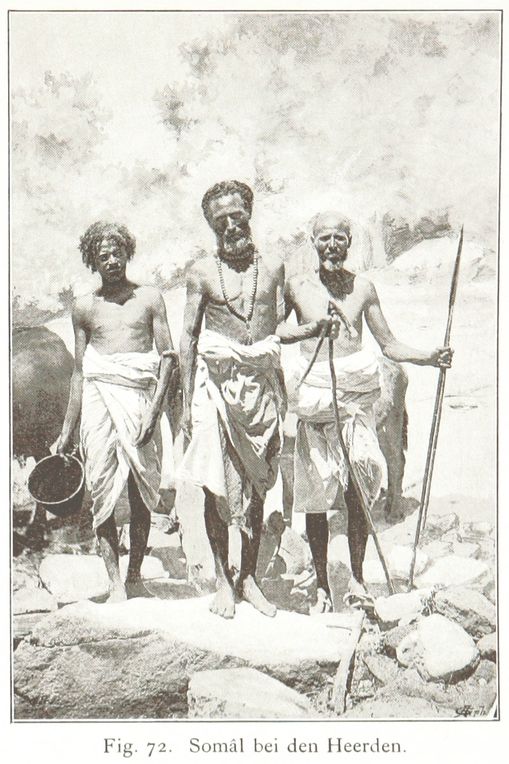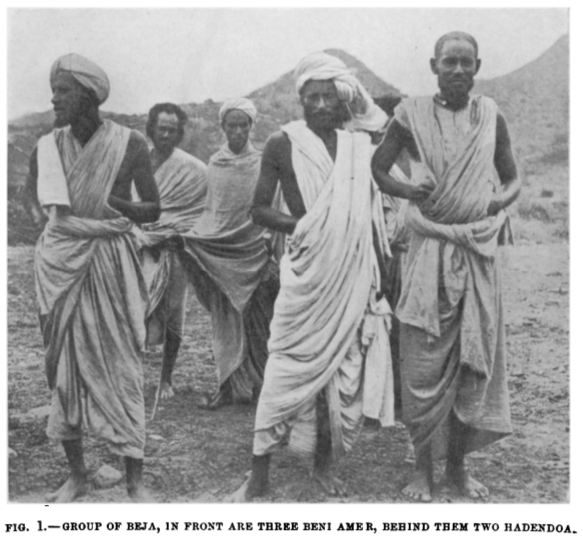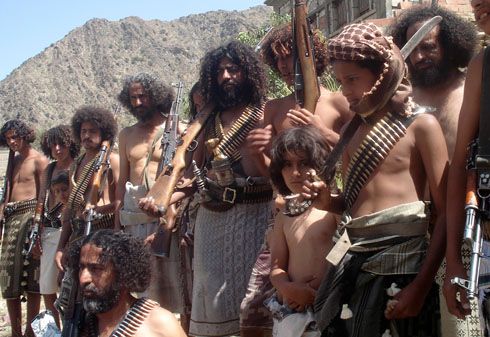Bilis wrote:Alpharabius wrote:If you guys want nothing to do with the Bantu/negroid populations of Africa ,and you want us Northeast Africans to have our own identity, then why not take the same approach when it comes to dealing with Semites and their culture , language etc ?
It is one's duty to defend one's ancestors. However, this indeed can and should be done while also making sure to respect as much as possible the dignity of other ancestral populations. The ideal ethos here would therefore be pro-Puntite; not anti-Negroid or anti-anything for that matter.

That said, I personally don't have issues with the continental name "Africa". The etymology of that name was actually derived from a Hamitic people, the "Afri" (a Berber group). It's the term "Sub-Saharan Africa" that's the real problem. This is because, by default, this neologism attempts to establish a false divide between the Afro-Asiatic/Hamitic-Semitic sibling populations on either side of the Sahara. Such a partition simply did not exist in antiquity, nor does it now.
Also, Semites are part of the greater Afro-Asiatic family, so they are not comparable to Bantus/Nilotes in that regard. Somalis and other Hamitic peoples in the Horn have close cultural, genetic, historical and linguistic ties with populations in Southern Arabia. Even the camel saddle that reer miyi traditionally use is the same as that used by the
ancient Southern Arabs:
"An introduction of camel from Arabia into the Horn at an early time, perhaps between 2500 and 1500 B.C., might be also supported by the use of an archaic South Arabian type of camel saddle in Somalia and Socotra."
Basically, there are three layers in the traditional Somali culture. The first and oldest layer is that of the Neolithic pastoral culture, as depicted on the rock art at Laas Geel and other areas in the Somali territories. This aspect is mainly gone; a few remnants of it are still found in the mainstream Somali culture, but more so in that of the Gabooye. The second and most important layer in the traditional Somali culture dates back to the Land of Punt. It contains elements of ancient Egyptian, Khaleeji and Greek culture due to longstanding contacts between the inhabitants of the Land of Punt (the Puntites), their close relatives in ancient Egypt, and their trading partners in Southern Arabia and the Hellenic region. Finally, there is the Islamic cultural layer, which today is the dominant one in mainstream Somali culture.
I'll go into more detail some other time on these three different cultural layers, but here is a summary of the key
Puntite culture:
"A few Arabic words are found in their vocabulary. Nevertheless, the characteristics of the Somalis belong to a different age than the Arabs, being more like the Egvptians, the Greek, or the Roman. The Somali language, in general, also, is more closely allied to several East Indian dialects. There are, in fact, many reasons for the belief that the Somalis belong rather to the Aryan than to the Semitic race. In their appearance many resemble the people of the Gallas and Swahili tribes, but others have the features of East Indians or Europeans with glossy hair. For this reason the Somali is frequently called " a black European." Some of these people have almond-shaped eyes like the Chinese. Almost all have thicker lips than those of the Caucasian race, and they hold their mouths half-open, disclosing large white teeth. In stature, the men are above the middle height and are physically well- formed ; many of them would make fine models for the sculptor. They have a scant beard like the Abyssin- ians. These people are a fine, strong race, says an English writer. Some of the warriors cut their hair. Others let it hang upon their shoulders. In this case it is always parted on the forehead. They sometimes bleach their hair with chalk dissolved in water. When, clad in goatskin, the Somali warriors advance upon their enemy at a rapid pace, their eyes gleaming with the spirit of war. their long locks streaming in the wind, and the sunlight gleaming upon their burnished lances and shields, they present a truly formidable and awe-inspiring appearance."
The ancestral Puntite culture is quite apparent when you consider things like the strong poetic/bard tradition, the customary law (similar to the Socrates/Plato/Aristotle philosopher tradition), and the attire historically worn by the Afro-Asiatic populations in Northeast Africa.
The
scansion used in traditional Somali poetry is similar to that used in ancient Greece, consistent with the Puntites' longstanding ties with the Hellenic region.
"In addition to the formal constraint of alliteration, Somali poetry has a system of quantitative scansion reminiscent of that used in ancient Greek."
Similarly, the traditional male attire is basically a modified Puntite/ancient Egyptian kilt, with a Greek/Roman toga slung over the shoulder, and an ancient Khaleeji dagger tucked into the waist:
Somali:

Beja:

Khaleeji:

Many ancient Greek/Roman ceramics, coins and other artifacts have also been found in the Somali territories and elsewhere in Northeast Africa. These often date from the first few centuries of the Common Era, as described in the
Periplus of the Erythraean Sea, Ptolemy's
Geografia and other early treatises. This was the period when the Barbaroi and the Azanians (two early Cushitic groups in the Horn) as well as the Aksumites traded with other contemporaneous kingdoms.




